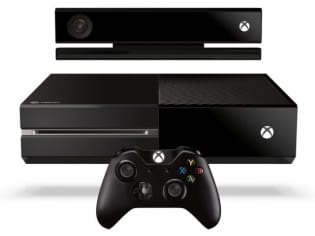August 21, 2013 – by Peter B.Counter
An iPhone with a fingerprint sensor in its home button: this is the mental image quickly becoming the most associated with the term “consumer biometrics.” The immensely popular Apple handheld device is rumored to be protected by a fingerprint, the very piece of the user that interfaces with the smartphone. The image inevitably gives way to vivid visions of a future in which our telephones have become our wallets, our passports and, for all intents and purposes, a part of our identity that is almost as important as our actual faces.
That description crossed into hyperbole, but it is easy to get excited about doing away with passwords and PINs. This enthusiasm is exceptional because biometric security is not in and of itself “fun.” It is convenient. It is revolutionary. It is cause for relief from the ever-mounting anxiety that all personal information can be accessed by invisible internet criminals, but the one thing it is not is fun. The closest a fingerprint activated lock gets to fun is being novel and arguably gimmicky.
This is why Microsoft’s upcoming videogame console, the Xbox One, is going to be doing a lot of heavy lifting in the decade following its November release date. When it comes to authentication and high security, the last thing most people think of is Halo, or Call of Duty, but videogame systems have been holding private, personal and financial information for over a decade now, and that information can easily become compromised, as it did in April of 2011 when a highly publicized hacker intrusion may have potentially exposed the credit card and billing information of every registered client on the Playstation Network.

Despite Microsoft’s voiced enthusiasm for fingerprint readers, the Xbox One will not be sporting a sensor in the console’s controller – swipe, area or otherwise (palm-vein authentication would seem like a good choice here too). Instead, the system will be leveraging the Kinect peripheral, a motion capture camera used as an interactive user interface solution, to indicate exactly who is holding the wireless, non-biometric control pad.
Because of the Kinect’s boasted abilities to measure movement, recognize faces and their expressions, count the number of people in the room and operate via voice command, in addition to initial reports that the monitoring device would not be able to be powered off, Microsoft received a large amount of criticism with initial designs. Cries of “Big Brother!” prompted the company to scale back certain ideas. That said, the Xbox One will be heralding in biometric gaming by year’s end.
In an interview with ComputerAndVideoGames, Xbox Accessories general manager Zufi Alam puts it simply: “Adding biometric sensors would drain battery life, and we’ve already got it via Kinect, so why do it?”
The controller houses two LEDs that allow the Kinect to track the gamepad and the smart camera does the rest, recognizing the player holding the controller. In showcasing the new controller’s features, Alam has described the effect in product demonstations as being able to hand a gamepad to the person sitting next to player one, have the Kinect camera instantly realize this exchange and instantly switch user profiles to reflect the identity of the new gamer.
The security applications of this are obvious. No more worrying that a credit card statement will arrive maxed out due to in-game micro-transactions from your child’s unadulterated spending sprees once they guess your password. But again that’s no fun, that’s just a relief. The trend, however, of including biometrics in the next generation of gaming puts security in the back seat, primarily existing for games to better adapt to the player’s reactions, measuring facial expressions and heart rates to better mold a unique game play experience.
It is not a serious application, but it promises to be seriously entertaining. The very idea that the mobile security market is moving in the direction of built-in fingerprint sensors despite biometric software solutions that are already available for download on current technology, shows that when trying to break into the consumer market technology needs to capture the imagination in novel ways, and nothing is more novel than playing a game.


Follow Us